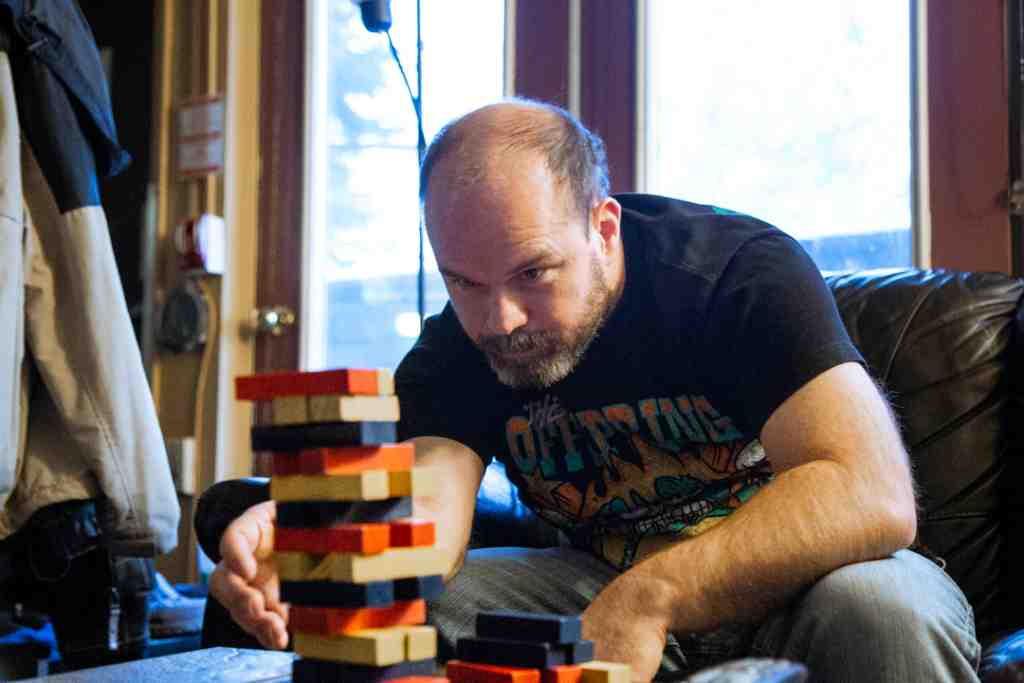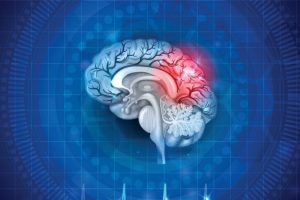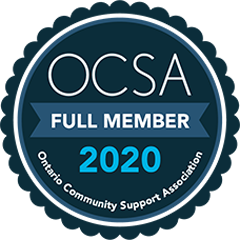Cognitive Changes after a Brain Injury
The cognitive changes after brain injury can affect the way a person thinks, learns and remembers. Different abilities are located in different parts of the brain, so a brain injury can damage some but not necessarily all.
Cognitive, or intellectual-type, difficulties and personality changes resulting from head injury seem to linger and be more problematic over time. We seem to have more difficulty accepting or adjusting to problems that cause us to forget, not think too clearly sometimes, make rash or impulsive decisions, or even to have trouble making decisions at all.
Cognitive problems encompass an array of possibilities, including memory failures; difficulty or slowness in learning new information, performing arithmetical calculations, or being flexible in solving unique problems; getting lost even in familiar places; getting confused with directions or left-right orientation; and having trouble getting dressed (or doing any number of previously familiar things) because of the difficulty in following a routine or logical sequence of steps. The list may seem endless. Careful observation and neuropsychological assessment will help define such problems and lead to an understanding of which therapy might help recover, or at least improve, these deficits.
Some common issues include difficulties with the following:
- Attention and Concentration
- Speed of information processing
- Memory and learning
- Planning, organizing and sequencing
- Communication concerns
- Judgement and Reasoning
- Problem solving and Planning
- Insight and Decision Making
- Denial
- Mental Flexibility and Perseveration
- Concrete Thinking
Some of these issues are more pronounced at the early stages of the recovery when the person is distracted with medical issues and the high level of activity in the hospital.
For some people however, changes in the way the person thinks can be permanent.
Attention and Concentration
Difficulties with attention can present themselves in different ways.
- Directing attentionThe person may have difficulty attending to a given task or focusing on the important or relevant components of the task. They may appear uninterested in or unaware of what they are being asked to do.
- Sustained attentionThe person may be able to direct their attention to a task for a few moments but may not be able to concentrate for very long. He or she may become distracted easily. The complexity of the task and the person's fatigue level can affect how long they can focus on a given task. Internal stimuli (e.g. thoughts about lunchtime) or external stimuli (e.g. outside construction noise) may interfere.
- Shifting attentionThe person may be able to concentrate on one task but cannot switch from one activity to another. They may get stuck on a task and may not be able to stop doing it. This is sometimes called perseveration.
- Divided attentionSome people have difficulty coping with multiple tasks. For example, a student may not be able to listen to a teacher and take notes. Or the person may not be able to concentrate on cooking dinner while the radio is on.
A reduced concentration span is very common after head injury, as is a reduced ability to pay attention to more than one task at the same time. These problems are usually caused by damage to the frontal lobe.
Attention problems tend to get worse when the person is tired, stressed or worried. When there are problems with concentration, other skill areas can be affected. It is difficult to follow instructions, plan ahead, be organised and so on, when there is a problem concentrating.
Working in a place with as few distractions as possible can help and, as concentration improves, distractions can be increased. In this way, someone can slowly learn to concentrate better in a world which is crowded with distracting sights and sounds.
Attention deficits are universal and persistent, regardless of the level of severity of the brain injury. These deficits greatly affect the ability to deal with complex tasks or tasks that require "cognitive endurance." The chances of returning to work are reduced if the individual is unable to focus on a task and maintain performance.
Speed of Information Processing
After a brain injury some people process information or think at a slower rate. Slowing down the speed at which the brain performs the task of information processing is often due to diffuse axonal damage caused by a shakeup of all of the pathways the brain uses to transmit messages. This results in problems such as not understanding fast speech, being unable to absorb instructions first time around, and not being able to quickly formulate a reply to a question.
To improve the speed of information processing, it is advisable to keep mentally stimulated at the right level to avoid overload. Sometimes it looks as if the person does not understand or is not going to respond to what is said to them - but given time to process the information, they may be able to respond accordingly.
Memory and Learning
Memory problems are the most common complaint of individuals who have suffered brain injury. Memory is easily damaged by brain injury because there are several structures within the brain which are involved in processing information, storing it or retrieving it. These problems are very persistent. Learning difficulties may persist for years despite attempts to provide cognitive remediation. Although the degree and nature of memory impairments varies in each situation, there are common patterns.
Often the person with a brain injury has a good memory for past events or previously-learned material (e.g. family members, where they worked, the family pet's name).
Damage to those parts of the brain on which these abilities depend can lead to poor memory.
Amnesia literally means 'a lack or an absence of memory'. In practice, few people forget everything, so amnesia usually refers to a failure of some part of the memory system.
Post-Traumatic Amnesia (PTA) occurs in the temporary period immediately after the accident such that the person seems relatively alright, but everyday memory for events or conversations is not working.
Retrograde amnesia describes a period during which a person cannot remember events and information for a time immediately before and after the accident. This form of memory loss stretches backwards from the accident for minutes, hours, days, months or sometimes years. Given time, memories from this period can return in part or whole but sometimes large chunks of memory are permanently lost.
It is sometimes said that people with memory problems do not remember in order to protect themselves from some kind of emotional trauma. While it is true to say that there can be psychological causes for amnesia it is found that these are rare, despite its frequent occurrence in films, plays and novels.
Short-term memory loss is the most common and troublesome type of memory problem. This can manifest itself in a variety of ways. Examples of this are forgetting what has just been said, having difficulty in learning a new skill, repeating the same question over and over, forgetting people's names, getting details mixed up, forgetting a change in routine and forgetting where things have been placed.
There is no magic answer to improve this type of memory problem, but rehabilitation can help a person cope by teaching strategies to compensate for the memory loss (e.g. written reminders, log books, established routines).
Planning, Organizing and Sequencing
People with brain injuries can experience difficulties with planning, organizing information or sequencing things to get a task done.
People sometimes experience difficulty breaking down a task into the individual steps that are needed and therefore the task can be overwhelming. For example, they may wish to phone a friend to arrange a visit but the steps of finding a phone book, looking up the number, deciding on an appropriate time and place to visit may be too much for them.
Strategies can be used to help in these areas, for example breaking the task into individual steps and providing cues to the person on how to complete each component of the task.
Communication Concerns
Brain injuries can affect a person's ability to communicate. Communication is not just speaking. It is also getting ideas across through signs, symbols, gestures, body language and written language.
Language disorders are complex and are closely tied to other cognitive components such as memory and attention. Examples include: decreased organization of expressing thought in logical sequences, inability to generate multiple ideas about a topic, and poor communicative behaviours (e.g., decreased eye contact, poor voice inflection). Damage to the left hemisphere of the brain can cause "expressive" or "receptive" difficulties; whereas, damage to the right hemisphere may lead to disturbances in paralinguistic aspects of language.
Some disorders of language show a substantial degree of resolution within the first nine months following the injury. However, follow-up studies have indicated that many subtle aspects of language are impaired for a far longer period of time. It is unlikely that language, if impaired, returns to its initial level following moderate and severe injuries.
Language problems following a brain injury vary. The speech produced by a person who has traumatic brain injury may be slow, slurred and difficult or impossible to understand if the areas of the brain that control the muscles of the speech mechanism are damaged. This type of speech problem is called dysarthria.
Others may have what is called apraxia of speech, a condition in which strength and coordination of the speech muscles are unimpaired but the individual experiences difficulty saying words correctly.
Another communication problem sometimes experienced by people after brain injury is aphasia. Some people with aphasia have problems primarily with expressive language (what is said) while others have major problems with receptive language (what is understood). Language is affected not only in its oral form of talking and understanding, but also in its written form of reading and writing. Typically, reading and writing are more impaired than oral communication. The nature of the problems varies from person to person, depending on many factors but most importantly on the amount and location of the damage to the brain.
Source and additional information about aphasia:www.asha.org/public/speech/disorders/Aphasia_info.htm
Sometimes people experience difficulties with the more social aspects of communicationand conversation such as problems with turn-taking, trouble generating ideas, trouble reading social cues in a conversation, difficulty recognizing facial expressions in self or others.
Other communication concern may involve:
Verbosity: An apparent inability to control the amount of talking, sometimes rambling a great deal, usually reflects an ineffective attempt to gain attention, to appear intelligent, or merely to avoid the fear of feeling left out. This, as well as many other psychological consequences of head injury, stems from a loss of sensitivity toward one's own behaviour and social actions.
Confabulation: Due to a combination of confusion, forgetfulness, and unwillingness to appear impaired, an individual may fabricate ideas that are partly or completely false. Bits and pieces of real or formerly understood information may be incorporated into a story that the person truly believes, being unaware of the inaccuracy. Sometimes confabulation masquerades as a tendency to be overly sure of something that everyone else knows is inaccurate.
Association between Thought and Action: Many individuals display an inconsistency between what they know or say and how they actually behave. Consequently, they do not appear to follow through on instructions or correct behaviour despite feedback.
Judgement and Reasoning:
The individual may be unable to analyse a situation correctly or take into account the probable consequences of actions. Inability to draw logical conclusions with analysis and support of facts is evident.
Problem-Solving and Planning:
It is common to see difficulties in analyzing, planning, and executing the solutions to problems. Individuals may be unable to generate strategies or follow through on the steps to effective problem-solving. They may be unable to detect errors, monitor performance, or anticipate outcomes.
The term "executive functions" refers to the ability to carry out goa�l/directed activity. These include the ability to create a plan for achieving a goal and the ability to initiate, to follow through, to complete the intended goals, to monitor one's performance, and to revise behaviour as necessary.
Insight and Decision Making:
When the individual is unable to understand and integrate the facts of a situation, the resulting lack of insight may appear as blatant illogical arguing. This characteristic produces poor decision making in general.
Denial:
In an effort to appear whole and unimpaired, an individual either denies that anything has changed or minimizes the recognition of change. Also, as some persons are truly unaware that they have changed and do not realize the existence of problems, unrealistic attitudes and/or excuses usually result.
Mental Flexibility and Perseveration:
Many individuals demonstrate inflexible thinking. They may have difficulty switching from one task to another or in shifting "mental set".
One consequence of this failure is perseveration, the tendency to repeat actions, words or ideas. The thinking is rigid and resistant to alternatives.
Concrete Thinking
Individuals may have difficulties with abstract concepts. These problems lead to their being "stimulus-bound" or unable to generalize from a single instance. There is a tendency to focus on specific, concrete details of a problem.
Concrete thinking can be evident in the individual's humour or in the use of certain language forms. There may be difficulties in profiting from experience. The individual may fail to appreciate the point of view of others.
DEFINITION OF ABI
Developed by the Clinical Data Working Group of the Toronto ABI Network and adopted by their Advisory Committee
TYPES OF HEAD INJURY
Describes the different types of brain and head injuries, including the complication and recovery process.
PHYSICAL CHANGES
Describes how brain injury may lead to physical changes which can be temporary or permanent, severity and location of the brain injury.
COGNITIVE CHANGES
Describes how cognitive changes after brain injury can affect the way a person thinks, learns and remembers.
EMOTIONAL/BEHAVIOURAL CHANGES
Describes changes in a person's emotional reaction or behaviour after a brain injury, often the most difficult for the individual and families to deal with.
HORMONAL CHANGES
Describes some of the common issues as they relate to hormonal changes following an aquired or traumtic brain injury.
FUNCTION & SYMPTOMS
Describes brain anatomy, its functions and symptoms following an aquired or traumtic brain injury.
3D BRAIN INTERACTIVE
Information on disorders, brain damage, case studies, and links to modern neuroscience research.
BRAIN STIMULATION
Describes the anatomy of the brain and its function with a special interactive feature.
Ranchos Los Amigos Scale
Describes this medical scale used to assess individuals after a brain injury, based on cognitive and behavioural presentations as they emerge from coma.
STATISTICS
Download the PDF document and view the staggering true numbers - and see how it compares with other health conditions.





